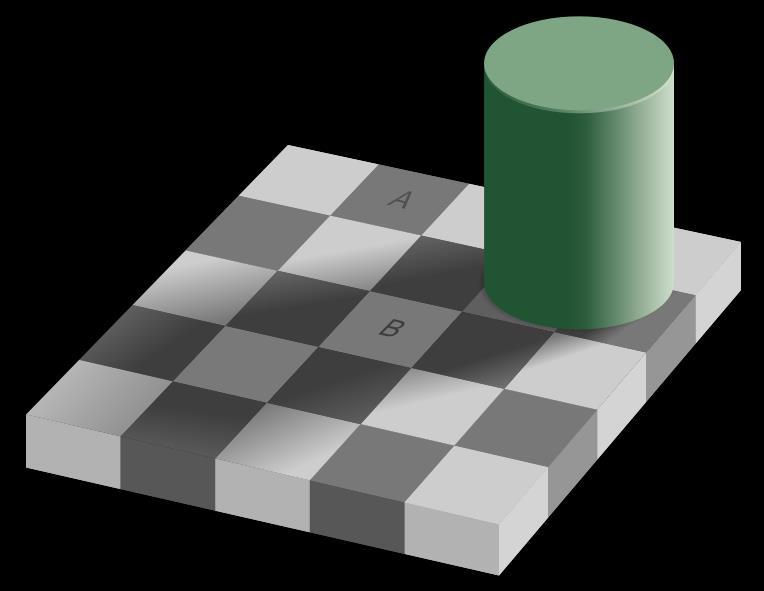(MENAFN- The Conversation) The human eye can physically perceivemillions of colours . But we don't all recognise these colours in the same way.
Some people can't see differences in colours – so calledcolour blindness– due to a defect or absence of the cells in the retina that are sensitive to high levels of light: the cones. But the distribution and density of these cells also varies across people with 'normal vision' causing us all to experiencethe same colour in slightly different ways .
Besides our individual biological make up,colour perceptionis less about seeing what is actually out there and more about how our brain interprets colours to create something meaningful. The perception of colour mainly occurs inside our heads and so is subjective – and prone to personal experience.
Take for instancepeople with synaesthesia , who are able to experience the perception of colour with letters and numbers. Synaesthesia is often described as a joining of the senses – where a person can see sounds or hear colours. But the colours they hear also differ from case to case.

Even though squares A and B are exactly the same colour, our brain interprets them as different.
By derivative work: Sakurambo ,CC BY-ND
Another example is the classicAlderson's checker-shadow illusion . Here, although two marked squares are exactly the same colour, our brains don't perceive them this way.
The culture of colour
Since the day we were born we have learnt to categorise objects, colours, emotions, and pretty much everything meaningful using language. And although our eyes can perceive thousands of colours, the way we communicate about colour – and the way we use colour in our everyday lives – means we have to carve this huge variety up into identifiable, meaningful categories.
Painters and fashion experts, for example, usecolour terminologyto refer to and discriminate hues and shades that to all intents and purposes may all be described with one term by a non expert.
Different languages and cultural groups also carve up the colour spectrum differently. Some languages likeDani , spoken in Papua New Guinea, andBassa , spoken in Liberia and Sierra Leone, only have two terms, dark and light. Dark roughly translates as cool in those languages, and light as warm. So colours like black, blue, and green are glossed as cool colours, while lighter colours like white, red, orange and yellow are glossed as warm colours.
TheWarlpiri peopleliving in Australia's Northern Territory don't even have a term for the word 'colour'. For these and other such cultural groups, what we would call 'colour' is described by a rich vocabulary referring to texture, physical sensation and functional purpose.
Five key colours
Remarkably, most of the world's languages have five basic colour terms. Cultures as diverse as theHimbain the Namibian plains and theBerinmoin the lush rainforests of Papua New Guinea employ such five term systems. As well as dark, light, and red, these languages typically have a term for yellow, and a term that denotes both blue and green. That is, these languages do not have separate terms for 'green' and 'blue' but use one term to describe both colours, a sort of 'grue'.

People see colours differently according to the way their language categorises them.
Shutterstock
Historically, Welsh had a 'grue' term, namelyglas , as did Japanese and Chinese. Nowadays, in all these languages, the original grue term has been restricted to blue, and a separate green term is used. This is either developed from within the language – as is the case for Japanese – or through lexical borrowing, as is the case for Welsh.
Russian ,Greek ,Turkishand many other languages also have two separate terms for blue – one referring exclusively to darker shades, and one referring to lighter shades.
Language and colour
The way we perceive colours can also change during our lifetime. Greek speakers who have two fundamental colour terms to describe light and dark blue – 'ghalazio' and 'ble' – are more prone to see these two colours as more similar after living for long periods of time in the UK – where these two colours are described in English by the same fundamental colour term:blue .
This is because after long term everyday exposure to an English speaking environment, the brain of native Greek speakers starts interpreting the colours 'ghalazio' and 'ble' as part of the same colour category.
But this isn't just something that happens with colour, in fact different languages can influence our perceptions in all areas of life. And in our lab at Lancaster University we are investigating how the use of and exposure to different languages changes the way we perceive everyday objects. Ultimately, this happens because learning a new language is like giving our brain the ability to interpret the world differently – including the way we see and process colours.
-
Colour
-
synaesthesia
-
Colour perception
-
Global perspectives
-
Optical illusion
MENAFN1710201901990000ID1099142436
Legal Disclaimer:
MENAFN provides the information “as is” without warranty of any kind. We do not accept any responsibility or liability for the accuracy, content, images, videos, licenses, completeness, legality, or reliability of the information contained in this article. If you have any complaints or copyright issues related to this article, kindly contact the provider above.